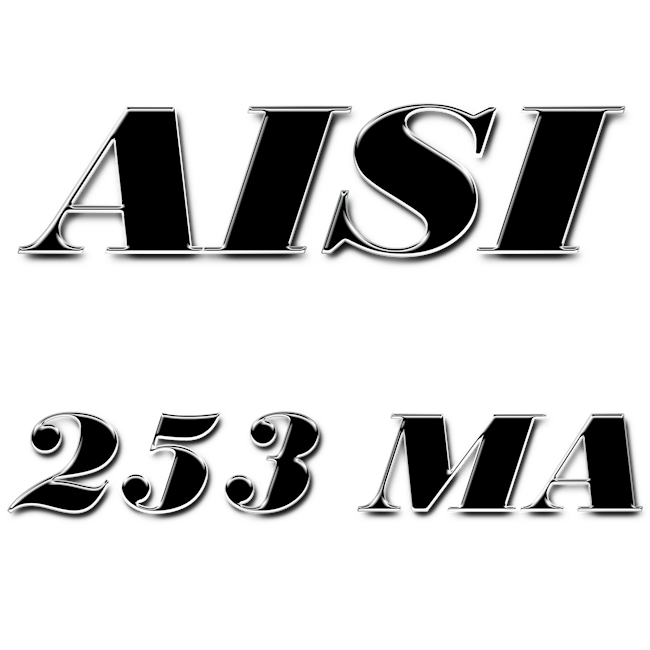AISI 253MA | EN 1.4835 | DIN X9CrNiSiNCe21-11-2 is an austenitic high-temperature heat-resistant stainless steel with good oxidation resistance. The steel is designed for use in the temperature range of 850 °C - 1100 °C. It is suitable for the manufacture of components with good resistance to thermal corrosion and relatively high strength at elevated temperatures.
The steel contains cerium in its composition and has good strength properties and fluidity. It is non-magnetic, but the metal can be slightly magnetic after cold working and deformation or welding.
At high temperatures, the alloy exhibits high resistance to abrasion and thermal expansion, resistance to deformation, high resistance to creep, sulfation (sulfur compound), erosion and corrosion, oxidation, exhaust gases in cyclic circulation and water vapor.
AISI 253MA grade provides excellent performance and ease of fabrication at high temperatures. It demonstrates excellent performance compared to AISI 310 grade in atmospheres containing carbon, nitrogen and sulphur. It is resistant to oxidation at temperatures up to 1150 °C. It provides a certain advantage in reducing the content of sulphide atmosphere compared to high-nickel alloys and AISI 310 grade due to its relatively low nickel content. The steel provides good oxide stability, high-temperature strength and excellent resistance to sigma-phase precipitation due to its properties, which it has due to the high content of silicon, nitrogen and cerium. Even down to cryogenic temperatures, the austenitic structure gives this alloy excellent strength.
EN 1.4835 is optimized in terms of corrosion protection, resistance (and strength) at high temperatures. However, the high N and C content makes the steel quite sensitive to intercrystalline corrosion. Its resistance to corrosion in an aqueous environment is limited. Therefore, components made of EN 1.4835 must be designed and used in such a way as to exclude contact of the material with acid condensate.
Oxidation
EN 1.4835 has good oxidation resistance. The high content of Cr, Si and rare earth metals reduces the growth rate of the thin oxide protective layer that forms on the metal surface. Oxidation behaviour is important because the properties of the oxide layer will determine the resistance to corrosion by other aggressive elements in the environment. The growth rate of the oxide film increases regularly with increasing temperature until the oxidation rate becomes unacceptably high or until the oxide layer begins to crack and flake off, i.e. the temperature reaches the point at which scale forms. The maximum temperature for AISI 253MA EN 1.4835 | DIN X9CrNiSiNCe21-11-2 in air is 1150 °C.
Heat treatment
Annealing in solution 1020 °C - 1120 °C. The holding time at the annealing temperature in solution is approximately 30 minutes, followed by rapid cooling in air or water.
Hardening
This grade of stainless steel cannot be hardened by heat treatment. But it can be hardened by cold working.
Hot and cold forming
Hot forming should be carried out in the temperature range of 1150 °C - 900 °C. Solution annealing is usually not required, since the material will be exposed to high temperatures during processing. Like normal austenitic stainless steels, the material is easily formed in the cold state. With a relatively high nitrogen content, the mechanical strength of EN 1.4835 is higher and greater forces are required for deformation.
Mechanical processing
When mechanically processing metal, it is necessary to take into account the relatively high strength and tendency of this grade of steel to cold hardening.
Welding
The steel has good weldability and can be welded in the following ways:
- shielded metal arc welding (SMAW);
- gas tungsten arc welding GTAW (TIG);
- plasma arc welding (PAW);
- gas metal arc GMAW (MIG);
- submerged arc welding (SAW).
Both coated electrodes and welding wire are recommended as filler. This provides the weld metal with properties equivalent to those of the parent material. Welding should be done without increasing the welding temperature. Heat input during welding should be kept low. Welding should be done with small diameter welding electrodes, and narrow passes without interlacing. The material should be cooled to below 150 °C between passes.
Mechanical properties
| Tensile strength, min., MPa | 650-850 |
| Yield strength, 0.2%, MPa | 310-350 |
| Relative elongation, min., % | 40 |
| Hardness, HB type | 210 |
| Modulus of elasticity kN/mm2 | 200 |
Physical properties
| Density g/cm³ | 7,8 |
| Specific heat capacity at +20°C, J/kg*K | 500 |
| Thermal conductivity at +20°C, W/m*K | 15 |
| Specific electrical resistance at +20°C, μOhm*m | 0,85 |
| Magnetic properties | non-magnetic |
| Temperature | +20°С | +200°С | +400°C | +600°С | +800°С | +1000°С |
| Coefficient of linear expansion, 10-6/°C | 17,0 | 17,0 | 18,0 | 18,5 | 19,0 | 19,5 |
Chemical composition of steel grade AISI 253MA | EN 1.4835 | DIN X9CrNiSiNCe21-11-2 | |||||||||
| C | Si | Mn | P | S | Cr | Ni | N | Ce | Fe |
| 0,05-0,12 | 1,4-2,5 | <1,0 | <0,045 | <0,015 | 20,0-22,0 | 10,0-12,0 | 0,12-0,20 | 0,03-0,08 | Other |
Application
It is used, in particular, as a material for ash bin covers, glass casting molds, pipe hooks, heat exchangers, recuperators, valves, tubular fences, combustion chambers, impact separators, turbine and fan rotors, fireproof anchors, boilers, exhaust manifolds, heat treatment stands, glass and cement industries, food industry, radiator pipes and pipes for heating air in sulfuric acid gas converters, thermocouples, burner components, heat treatment furnace pipes and styrene reactors, convection pipes.
